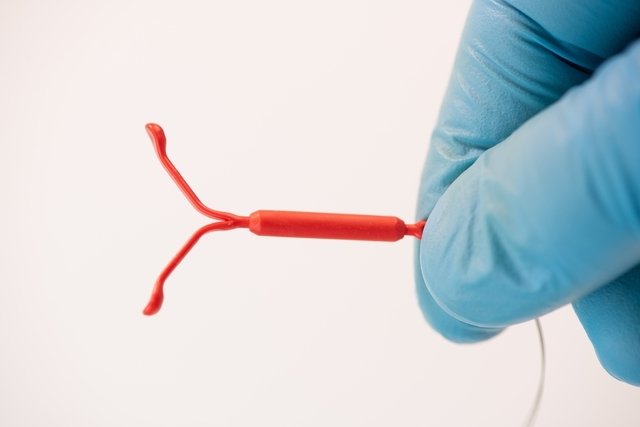The silver IUD is an effective contraceptive method to prevent pregnancy, as it is composed of copper and silver and can promote changes in the characteristics of a woman’s uterus and make cervical mucus thicker, interfering with sperm mobility and preventing fertilization. .
The silver IUD has a “Y” shape, making it easier for the gynecologist to insert, and is mainly recommended for women with a smaller uterus.
It is important that the type of IUD is discussed with the gynecologist so that the advantages and disadvantages of each type can be assessed and whether there is a need to use a hormonal IUD, for example. See more about the types of IUDs.

How it works
The silver IUD continually releases copper and silver into the uterus over a period of 5 years. The released copper acts directly on the walls of the uterus, the endometrium, making it difficult for a possible fertilized egg to implant and a pregnancy to develop. Furthermore, the copper released is capable of promoting an increase in cervical mucus thickness, making it difficult for sperm to move, as well as promoting an inflammatory action capable of inducing sperm death.
At the same time that copper is released, silver is released, which acts by preventing the oxidation of copper in the uterus and, consequently, promoting an increase in the contraceptive effect of the IUD.
What is the difference between the copper IUD and the silver IUD?
Both the copper IUD and the silver IUD are intrauterine devices that do not contain hormones. However, the copper IUD is made only of copper, while the silver IUD contains copper and silver. Furthermore, because it contains silver, the silver IUD may have fewer side effects than the copper IUD, but it can only remain in the uterus for 5 years, while the copper IUD can remain in the uterus for 10 years. Learn more about the copper IUD.
Does the silver IUD have hormones?
The silver IUD is a type of non-hormonal intrauterine device, that is, it does not contain hormones in its composition, unlike the Mirena IUD. Thus, the silver IUD has less intense side effects than the hormonal one and its effect on the body is due to the release of copper and silver.
How to insert the silver IUD
The silver IUD must be inserted in the gynecologist’s office and is a simple and quick procedure, lasting up to 20 minutes. To do this, the woman must be in a gynecological position, with her legs apart, and the doctor must insert the device into the uterus, leaving a small thread inside the vagina to ensure that the IUD is placed correctly.
The silver IUD can be inserted at any stage of the menstrual period, however it is important that the gynecologist’s instructions are followed, who may recommend that it be placed during the menstrual period, which is when the uterus is most dilated, facilitating placing.
Possible side effects
The silver IUD is not associated with many side effects, however in the first few months after insertion, it is possible to experience changes in the menstrual cycle, mild abdominal discomfort and small bleeding after insertion of the IUD.
Furthermore, as it contains silver in its composition, an increase in menstrual flow and cramps is not usually noticed after the insertion of the silver IUD, unlike what happens with the copper IUD.
Bibliography
- FEBRASGO. Contraception Manual. 2015. Available at: <https://central3.to.gov.br/arquivo/494569/>. Accessed on 25 Nov 2022
- VARELA, MARIA GIL. Contraception. Available at: <http://www.fspog.com/fotos/editor2/cap_16.pdf>. Accessed on 25 Nov 2022
- HOLLAND, Antônio AR; BARRETO, Carlos FB; HOLLAND, Julita CP et al. Controversies surrounding the intrauterine device: a review. FEMALE. Vol 41. 3 ed; 141-146, 2013

Sign up for our newsletter and stay up to date with exclusive news
that can transform your routine!
Warning: Undefined array key "title" in /home/storelat/public_html/wp-content/plugins/link-whisper-premium/templates/frontend/related-posts.php on line 12
Warning: Undefined array key "title_tag" in /home/storelat/public_html/wp-content/plugins/link-whisper-premium/templates/frontend/related-posts.php on line 13



